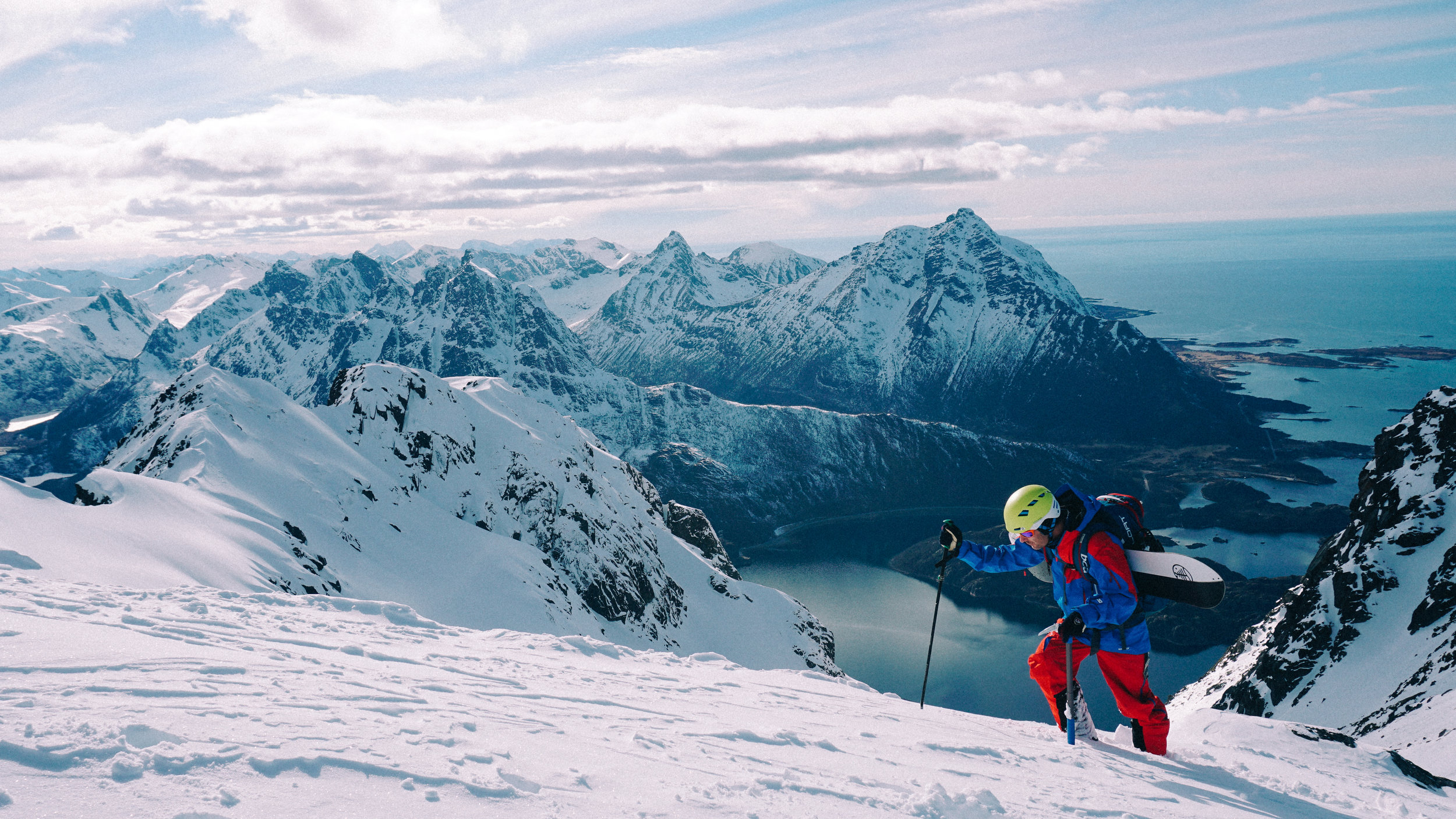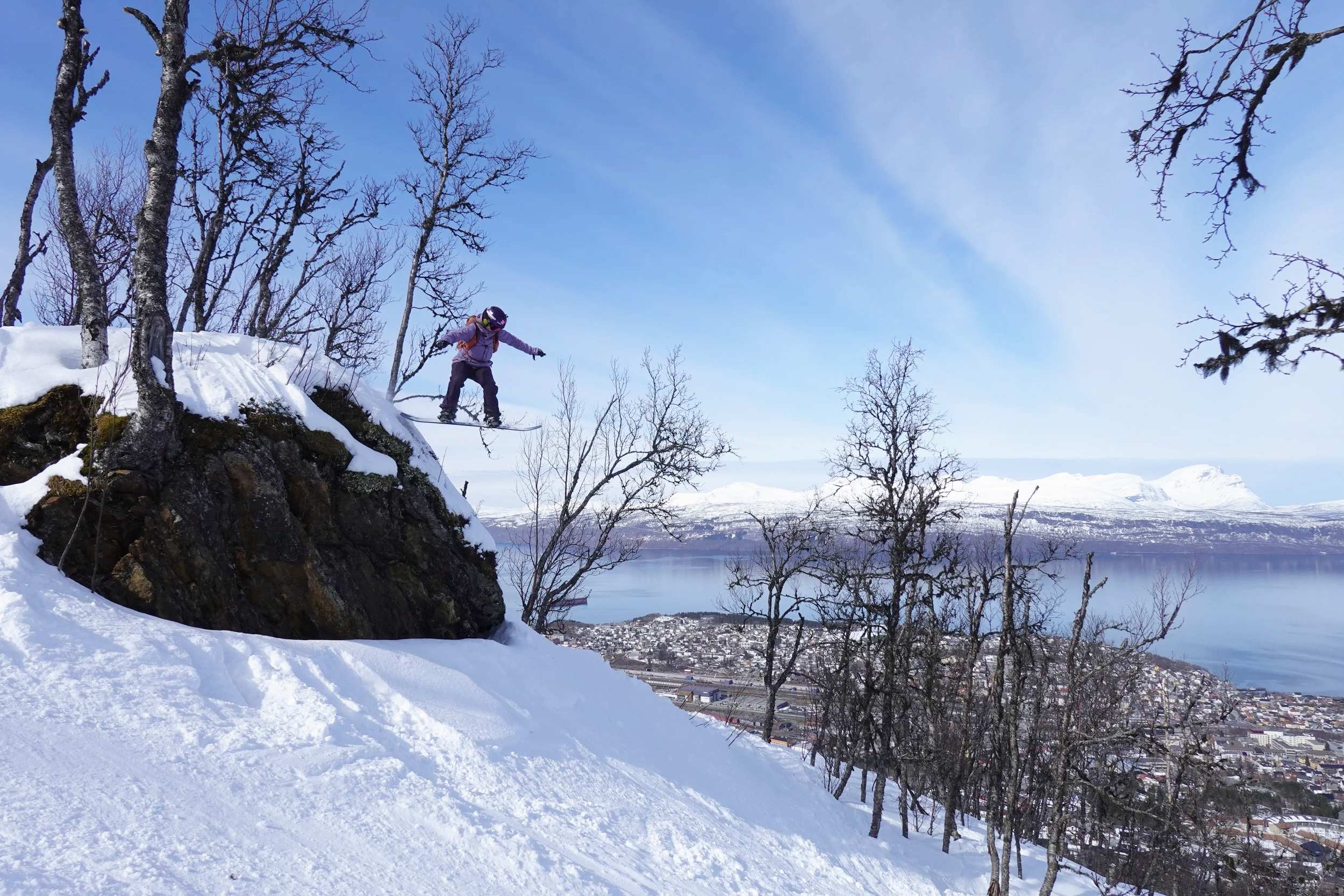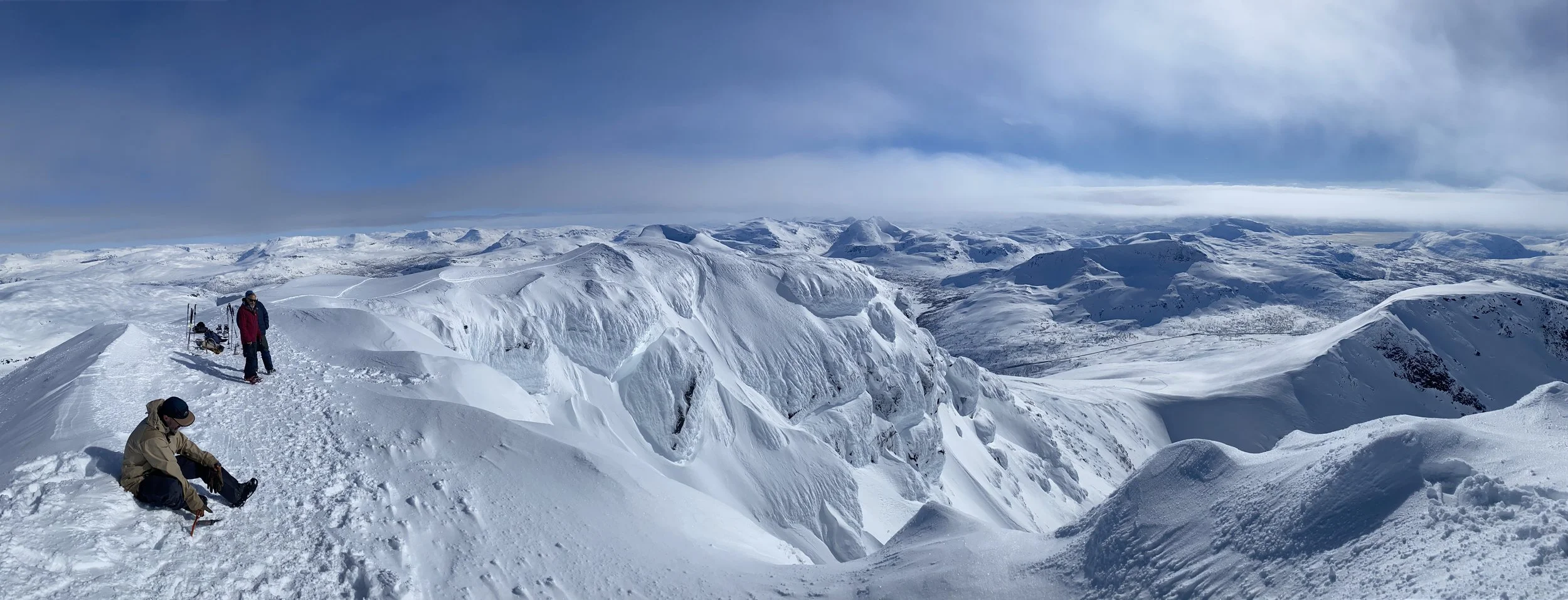Narvik Gateway of the North
The long freight trains that slip into town, with hair raising, metal-on-metal screeching brakes, head for the city's industrial port and the waiting ships give a nod to Narvik’s checkered past. The trains (which amazingly generate more electricity from braking while loaded on their way down to the sea than they use running back up to Sweden empty) are full of iron ore coming from the mine of Karuna, Sweden.
The waiting ships sail out of the huge natural harbour of Ofotfjord to steel plants around the world and it was this ore that both Hitler and the Allies wanted in 1940, ultimately leading to the Battle of Narvik and Hitler’s first defeat, which was short lived as Norway soon fell to the Nazi war machine once the Allies unexpectedly pulled out.
Why am I telling you this? Well it’s sort of an excuse as to why narvik looks the way it does. The backdrop of endless backcountry lines, on snow clad mountains leading down to the sea, is shared with a town that appears more functional than UNESCO heritage site. Flattened in the war, Narvik was rebuilt to work and it does. More recently shopping malls have cropped up, giving locals shelter from the elements and deep winter snow. But give the town a slight scratch and just under the surface there’s some cool spots, such as a floating sauna, a fish market with adjoining restaurant, the excellent and newly housed Battle of Narvik Museum, and a brilliant little ski resort, with some seriously steep slopes, playful rockdrops and plenty of accessible backcountry lines, some with 40 plus degree drop in’s.
Narvik’s Ski Resort -Narvikfjellet, is at the start of a large redevelopment, with five new lifts planned, new slopes, and additional accommodation, all to be completed in time for the Alpine Ski World Championships of 2029. As such, the current top lift, up to a Star Wars like antenna, is closed for redevelopment, which is sort of cool as only those that want to skin up can get up to the top and the close by Tredjetoppen peak, which is a Narvik classic.
On arriving into the small but perfectly functional airport of Harstad/Narvik airport, there was a few small groups of ski tourers checking the carousel for their bags, and after a quick chat I found out all were heading somewhere else, some to the famous and oft crowded nearby Lofoten Islands, while others were taking a long drive to the Lyngen Alps. Both amazing locations but, little do those heading to these iconic destinations know, that the Narvik area has more than its own share of sweet tours, which are often in skiable condition more of the season than the steeper and more exposed slopes of both the Lofoten and Lyngen mountains.
Lofoten Islands Film:
A Splitboarding Story
A ragtag bunch of splitboarders and ski tourers, join forces for a week of riding the sharks teeth spines of Norway’s far north.
After a few laps of the Narvikfjellet resort, to get the legs and lungs in, we watched a freeride comp where mostly locals were hurling themselves off various rock drops into surprisingly deep powder, given the sun was out and the last snow was a few days ago. Suitably impressed with how bouncy the local youth were we thought we’d take it down a step and put our skins on for a quick tour up to Tredjetoppen peak, and looking at the map we soon realised that most mountains in these parts seem to have two or three names and/or spellings, there’s Norwegian, Sámi, Swedish and sometimes even a sort of bastardised english version, not to mention whatever your mapping app wants to call the peaks.
Our first loop up to the resort summit saw us simply drop down the resort side in deep powder with a sharp left turn through the trees back to resort. The powder was so good we went for a second loop but this time heading right before the top for a long, but shallow, traverse towards Tredjetoppen peak, where we met three guys with a dog each, helping pull them towards the summit.
Rather than head to the summit we stopped above the Morkholla Bowl, avoiding the very large cornices, and after watching the dogs and their owners send it we dropped the short 40 degree drop in onto wind affected snow, which soon turned to some of the best powder of the week before bushwacking our way back to the resorts base station.
The following day was wet, it was raining at sea level, but it was also cold and the snow was falling on the peaks, so we took the executive decision to have a floating sauna in Navik Harbour, where the brave can dunk themselves straight into the Arctic Ocean via a trap door, or the crazy can leap from the saunas roof. Refreshed and clean, we had lunch in the local fish restaurant after choosing what we wanted from the fish hall next door.
Next morning we were joined by Richard from Mountain Guide Travel based in Riksgransen resort, who suggested Spanstinden Peak which tops out at 1457m. It’s around a 30 min drive and we parked up by the side of the road, where there were no other cars, and while the start of the tour was on hard pack we soon realised that more had fallen the previous day than we’d thought. It’s a straight-forward skin across a slowly rising slope, where we startled an arctic hare, before it steadily steepens out until you reach a large flattish summit ridge.
We were alone on the top, although there was now a couple of small groups coming up behind us, and after a chilled out lunch in bright sunshine we rode excellent powder most of the way down until we hit some crazy crud that had us taking turns at speed as we tried not to crack through to the faceted snow beneath.
Heading inland we drove 40 mins due east and crossed into Sweden and the resort of Riksgransen (which translates to national border) where they were gearing up for an end of season party, with a huge jump just below the bars terrace. A quick look around and we drove another 10 mins east and skinned up towards a locals favorite of Vassecohkka’s North Summit. A long and steady approach led to a steep chute before a 25/30 deg summit slog, where at the top we met a local family with their two young sons, who told us it was their first ever tour and while it was fun they felt they’d wait till next season to do another.
The ride down didn’t disappoint as the sun turned our spray into thousands of reflective diamonds and we all glided back to the car, only stopping to cross the railway tracks.
Back in Riksgransen even the trains didn’t manage to drown out a band throwing down some very dubious versions of american classics, but the local vibe was high and the terrace was bouncing, although some very odd looking and highly tooled up security guards (apparently the police take a few hours to arrive if needed) wouldn’t let anyone dance on the tables or chairs, perhaps they should chill out a bit and take a leaf out of the la Folie Douce playbook.
Week over and we’d barely scratched the touring options here, and a stunning drive south down the coast, to look at Stetinden (Norway's unofficial national mountain) only fueled our lust to return, both for more touring and some summer climbing too.
I’d really recommend using a guide if you want to attempt anything tricky, but if flying solo a must is the excellent Ski Touring Around Narvik guide book (use Backdrop10 code for 10% off).
Stetinden
How Do I
Visit Narvik for all things Narvik, where winter and summer offers touring, mountain biking, world class climbing and endless watersports and hiking.
Visit Norway for general information on Norway
Norwegian Airlines for flights to Narvik and across the region/country.
Narvikfjellet is the local ski resort, a super chilled place with great tours from top station and perfect warm up slopes.
Mountain Guide Travel are based in Riksgransen and offer touring trips and heliskiing packages, both locally and across the wider Arctic.

















